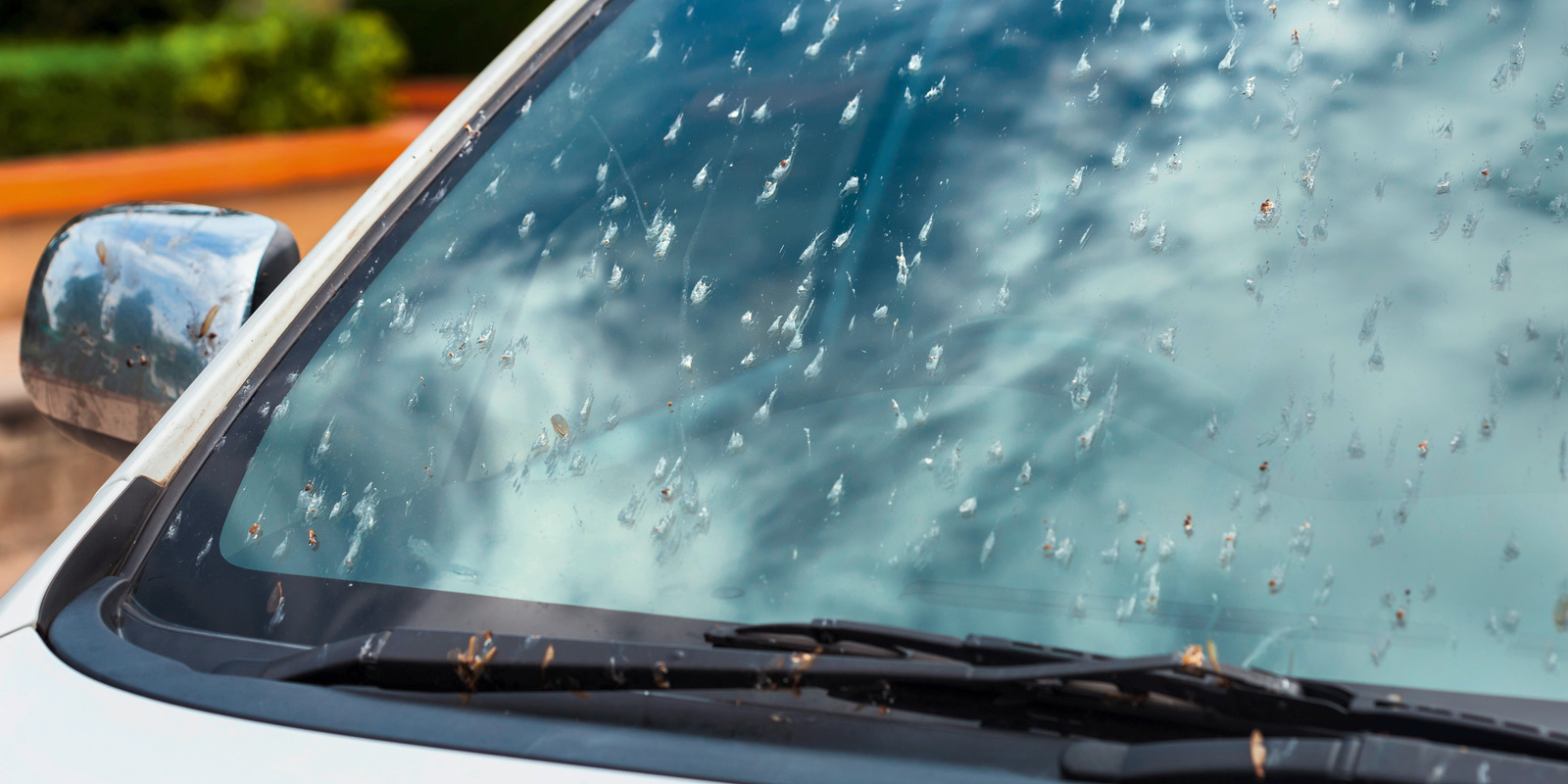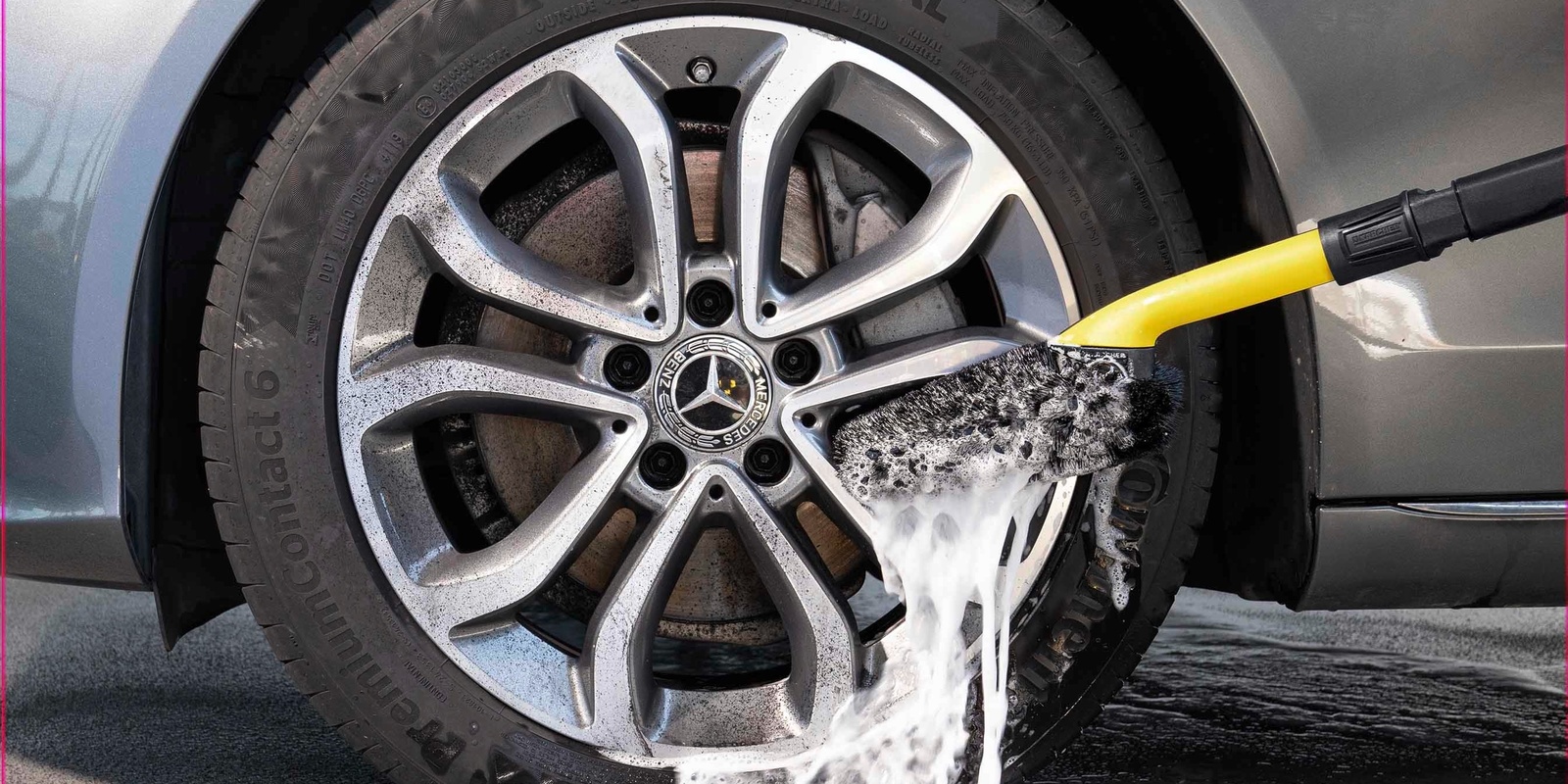CAR WASHING AT HOME: TIPS AND TRICKS
Is it getting harder and harder to look through your car's dirty windshield? Or is your car covered with pollen, leaves, road salt, or animal droppings? It’s probably time to wash your car. If you don't want to head to the car wash, you can wash your car quickly and easily at home with the right equipment and these tips.
Why should you wash your car regularly?
Whether it's a collector's item or a commodity, you should wash a car at regular intervals. Dirt can settle on the body of your car at any time of year - be it salt in winter, pollen in spring, insects in summer or leaves in autumn. If debris and dirt is not removed, it can eventually cause damage to the paintwork. Regular cleaning therefore not only gives the car a new shine but also helps to preserve its value. With the following tips, your car be clean in no time again.
Attention: Follow regulations
Whether you can wash your car in front of your house depends on your local regulations. It is prohibited on public roads in some areas. This is true regardless of whether cleaning products are used or not. On private property, washing your car and motorcycle is usually allowed. However, the prerequisite is that the water used for washing your car at home is released into the sewage system. Before you wash your car at home, you should always first find out whether washing the car on private property is not expressly prohibited. A legally safe alternative is to wash the car in a car wash or self-service car wash.

How to wash your own car: step-by-step guide

Step 1: Remove loose dirt and debris
Before you start washing the car, remove loose dirt such as leaf debris or petals by hand or with a soft brush.

Step 2: Pre-cleaning
Now it's time to pre-clean: Loosen coarse dirt with the pressure washer and use the flat-jet nozzle to prevent scratching with the washing brush as you proceed. Alternatively, pre-clean your car by hand with a spray gun attached to a garden hose or a bucket of water and a soft sponge. If necessary, pre-treat and clean rims. The wheel wells should also be taken into consideration during the prewash phase because dirt is particularly difficult to remove from this area. To clean these hard-to-reach places, a short jet pipe with a 360-degree joint is a suitable attachment for the pressure washer. It can be adjusted to any angle. Thanks to a comfortable hand position, the water jet can be directed forward, to the side, upward and downwards.

Step 3: Apply detergent
Now, using the detergent function on the pressure washer, clean the entire car with car shampoo or with the Universal Cleaner. Make sure you do this from the bottom up and leave it to briefly soak into the dirt to loosen it. Then it only needs to be rinsed off with the powerful water jet. If you need to leave it to soak in for a bit longer, the foam cleaner should be used. This forms a dense, longer-lasting foam. It is particularly easy to apply with a foam nozzle. Alternatively, you can apply the detergent to the car’s body with a soft sponge. Caution: Do not create mountains of foam, otherwise the foam may slide off due to its own weight and won’t have enough time to soak in.

Step 4: Rinse off your car
Then wash the car with the pressure washer and clean water. Always work with the flat jet nozzle and keep a 15-centimetre distance from the car’s surface or a 30 centimetre distance from the tyres. Alternatively, a soft wash brush, a power brush or a rotating wash brush an be connected to the pressure washer. This removes debris even more thoroughly. Tip: Always wash the car from the bottom up. This makes it easier to see which areas still need to be worked on.
If you don’t own a pressure washer you can also rinse the car with the garden hose and a spray nozzle.
Tip
When applying the cleaning product with a pressure washer, it is better to use a slightly higher concentration of cleaning product sparingly, rather than a large amount that is highly diluted, as this can reduce the effectiveness.
Step 5: Leave car to dry and touch up paint
Once the car has been thoroughly rinsed, leave it to dry or use a leather cloth. Touch up minor dents and scratches that are now noticeable. After thoroughly cleaning the exterior, you can start cleaning the interior.

Remove stubborn dirt from car

Insect residue
Insect residue can be removed with a special insect remover. The residue can then be gently removed from painted surfaces, radiator grilles, exterior mirrors, windows, and plastic. Simply spray the cleaner onto the affected areas after pre-cleaning your car, allow to soak in, and then rinse off with clean water. Alternatively, dirt can be soaked with a wet paper towel and simply removed after a good 15 minutes.

Tree sap
If you discover tree sap on your paint, act quickly. The fresher it is, the easier it is to remove with warm water and a sponge, a pressure washer, or by going through the car wash. If the tree sap has already dried, two home remedies can help: either apply a few drops of door lock de-icer to the affected areas or apply some grease. You can use butter, margarine, or cooking oil. After a few minutes, the sap can be wiped off with a soft cloth.

Bird droppings
Bird droppings that have not been removed from the car can damage the paint, especially in the summer months. Don’t wait to remove them. Important: Dried-on droppings should never be loosened by rubbing them, as this can scratch the car. Instead, soak the affected area using lukewarm water and a kitchen towel before washing the car with the pressure washer or in the car wash. The faeces can then easily be wiped off with a soft sponge or damp cloth.

Salt residue
Street salt and grit should be washed off the car regularly in winter, as it can increase corrosion in already damaged areas, such as paint that already has chips or scrapes in it. Road salt should also be regularly removed from the underbody of the car. To better protect the body from moisture and salt, it is recommended to wash the car thoroughly before winter and then treat the paint with a wax polish to preserve it.

Clean car windows and mirrors
Frequent drivers and commuters know the problem: dirt, pollen, and insects quickly collect on the windshield during the warm months. Not only does this look shabby, but it can also dangerously limit visibility. Regardless of when the next petrol stop or car wash is planned, the windshield, side windows, and mirrors should also be cleaned more often. The best way to do this is with a special car glass cleaner, which guarantees streak- and glare-free cleaning and removes insects and road grime as well as fingerprints. Often, the cleaners contain additives that provide an antistatic effect to ensure that the glass surfaces no longer get so dirty and are easier to clean in the future. To clean the windows, simply apply the cleaner to the surfaces, allow it to soak in briefly and wipe off with a soft microfibre cloth. It is even easier with the windshield cleaning set for the electric ice scraper, which can be used all year round. The powerful rotation of the electric ice scraper helps remove stuck-on dirt effortlessly.


















